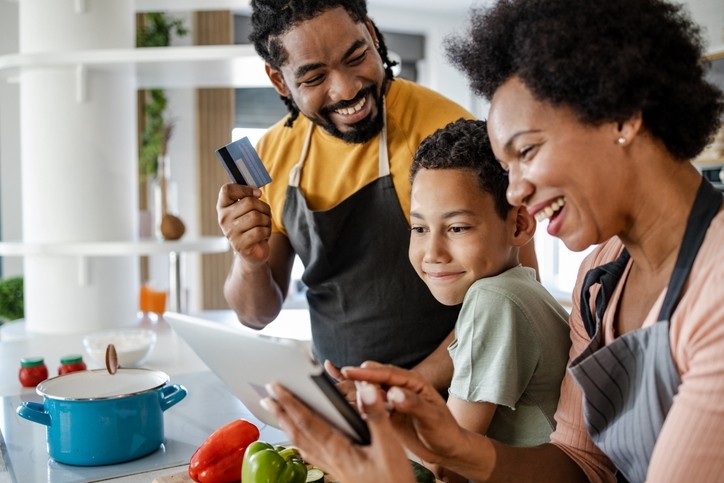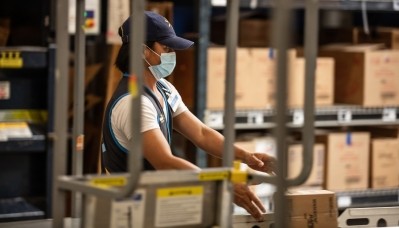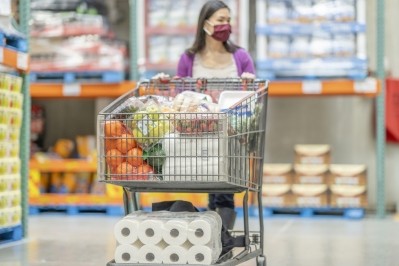Natural Products Expo East
Is the era of online shopping as the ‘great equalizer’ for small and large brands ending?

“During the pandemic, all eyes turned to e-commerce as consumers embraced buying just about everything via the internet,” Carlotta Mast, SVP and market leader at New Hope, told Expo East attendees gathered in Philadelphia last week.
This shift was touted as a ‘great equalizer’ for marketing as it allowed smaller and emerging brands to sit side-by-side with larger, established brands on a digital shelf in a way that would never be possible in brick-and-mortar due to expensive slotting fees, limited space and the different ways that consumers shop in-person versus online.
As online shopping leapt ahead by five or even 10 years during the pandemic, many small businesses focused on direct-to-consumer sales strategies – delaying or even forgoing entry into brick-and-mortar retail in favor of cultivating shopper relationships online where the price of digital advertising was far less than in-store product placement and promotions and where they could more easily side step the competition.
And while this strategy has worked for the past two years, it may soon become outdated and less effective as more consumers return to brick-and-mortar stores now that the threat of COVID-19 exposure has ebbed.
“E-commerce does continue to be our fastest growing sales channel for natural and organic products in the US, but we can see [from the data] that brick and mortar truly reigns supreme for where sales are happening,” Mast said, pointing to data that shows the US e-commerce adoption growth rate is reverting to roughly where pre-COVID data suggested it would be at this point – so still steady, but not as meaningful as the five-year leap ahead due to the pandemic that many people thought would be permanent.
For example, within the vitamins, minerals and supplement category, share of dollar sales and contribution to growth is no longer led by Amazon, as it was in August 2021, but rather by brick-and-mortar, according to SPINS data. In August, 83% of the category’s dollar sales and contribution to growth came from brick-and-mortar and 17% from Amazon. This is a reversal from a year ago when 64% of share of dollar sales and contribution to growth came from Amazon and 36% from brick-and-mortar.
In addition, Mast noted, now “mass market is alone is driving nearly 60% of sales for the industry.”
She explained: “What this means is that brands that may have prioritized Amazon and direct-to-consumer over the last several years, they’re really going to need to embrace a truly strategic omni-channel strategy that blends e-commerce with brick-and-mortar to truly drive the kind of growth potential that they could have in the future.”
The online shopper is here to stay
Even as the majority of shoppers return to brick-and-mortar, many will remain loyal to online – meaning this is not a channel that can be ignored, said Kathryn Peters, EVP of SPINS.
“The online shopper is not going away… this really is a part of the future and it has to be part of your integrated strategy,” especially if brands of all sizes want to build relationships and loyalty with up and coming consumers whose buying power will increase in the coming years, she said.
She explained that currently online shoppers tend to be younger consumers (35% aged 18-35 years vs 14% aged 35-50 years), Black consumers (35% vs 17% non-Hispanic white consumers) and those with children in the house under the age of 18 years (32% vs 16% without children younger than 18 years) – all of whom are buying online about once a week, which is twice the rate of others.
In addition, natural products shoppers who do buy online tend to do so at nearly twice the rate of all shoppers, Peter said, pointing to data that showed natural product shoppers dedicated 9% of their share of wallet to online in the 12 weeks ending Aug. 7, 2022 vs all other product shoppers who dedicated only 5% of their share of wallet online in the same period.
While these numbers may not be as high as they were in the first year of the pandemic, they still should “serve as a wakeup call for all of us about how do we make the [online shopping] experience easier” because it is still a notable contributor to the bottom line, Peters said.










